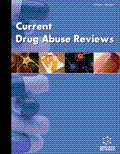Abstract
Roadside studies indicate that 1-15 % of drivers drive under the influence of one or more drugs of abuse. After drug use, drivers are more often culpable for an accident than non-users. Information on drugs and traffic safety comes from roadside studies, epidemiological research, experimental studies on driving-related skills, and on-the-road driving tests. Roadside studies show that drivers most frequently test positive for the use of alcohol and/or cannabis. These two drugs affect driving ability in a dose-dependent matter and result in poor vehicle control, especially when used in combination. Drivers on cocaine, ecstasy and amphetamine show no impairment on basic driving skills, but often overestimate their driving skills. In combination with impaired decision making, this increases risk taking during driving. Only few studies looked at the effects on driving of other drugs of abuse, such as ketamine, inhalants and anabolic steroids, but suggest a negative effect on driving performance. In conclusion, most drugs of abuse negatively affect driving ability, especially when used in combination with alcohol or another drug. It is of concern that a substantial number of drug users are not aware that their driving is impaired.
Keywords: Traffic safety, driving, alcohol, nicotine, cannabis, cocaine, ecstasy, LSD, ketamine, amphetamine
 64
64















